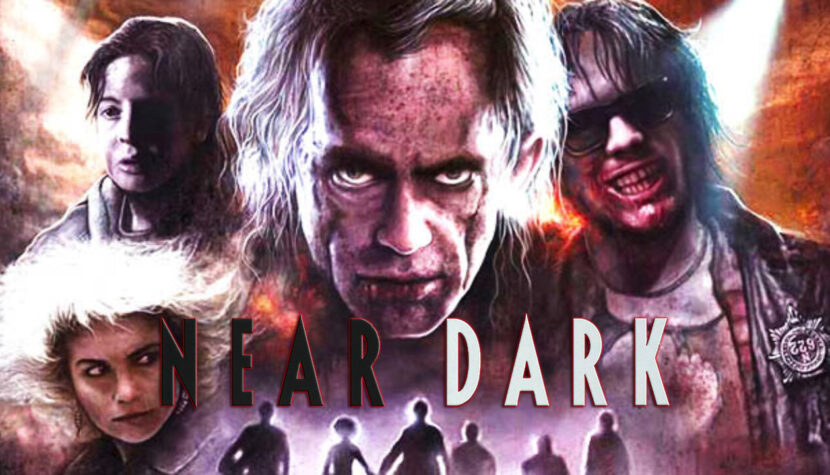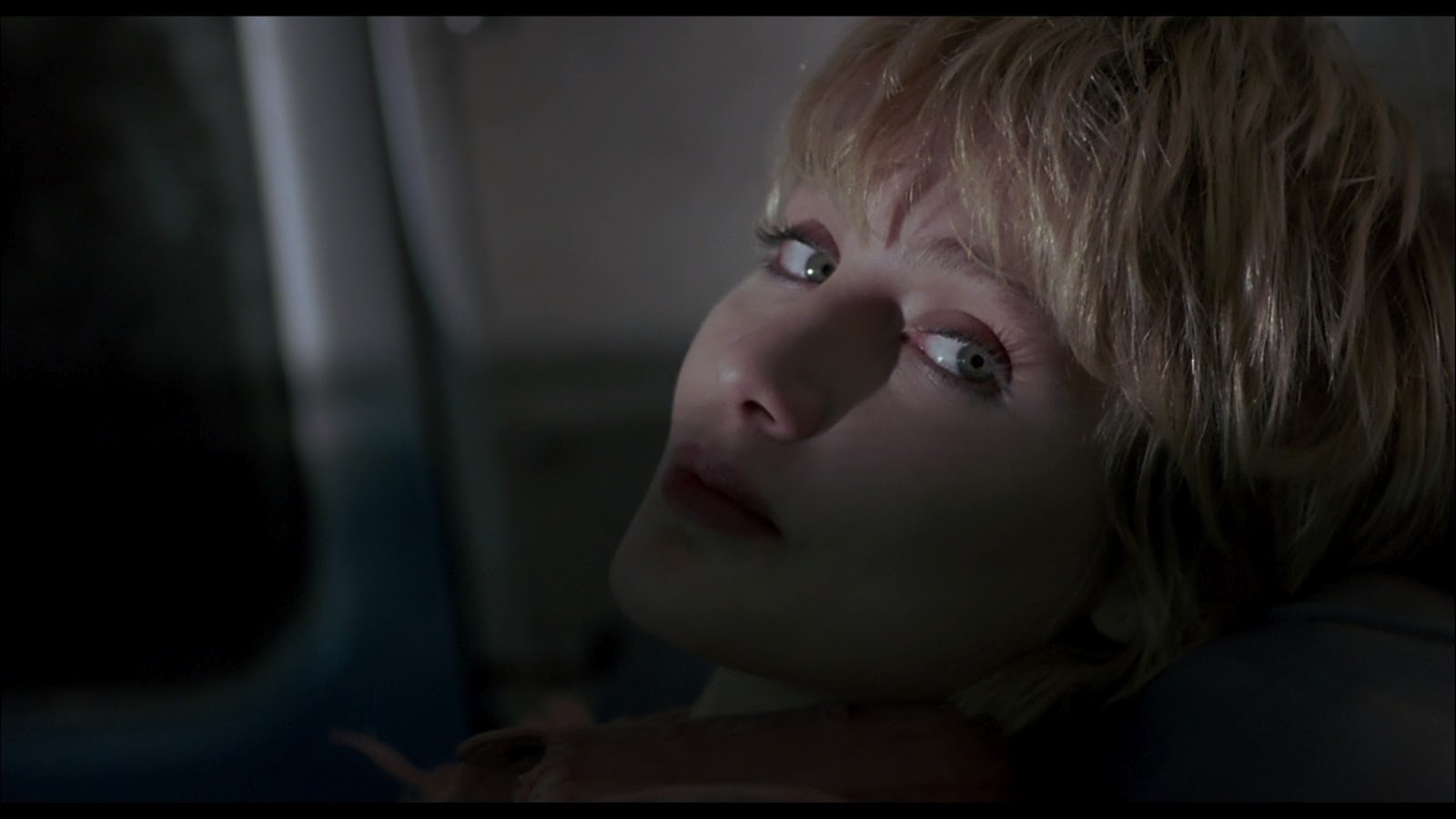NEAR DARK. Vampiric horror from the Oscar-winning director

…, each drawing from the vampire myth in a quite different way. In Tony Scott’s The Hunger (1983), immortality comes to an end, and then one must find a new partner – eternal love is, therefore, a lie because no one wants to be alone, even a vampire. Tom Holland’s Fright Night (1985) juxtaposes tradition with modernity, depicting our fanged friend as a domesticated creature, living next door but still capable of turning into a giant bat and craving blood. Joel Schumacher’s The Lost Boys (1987) is, of course, a fantasy straight out of Peter Pan, with teenage vampires led by Kiefer Sutherland – forever young, disobedient to any rules, thinking only about having fun. A few months after the release of the latter film, Kathryn Bigelow offered a completely different model of a vampire – nomads, traveling in a group of wanderers, not making plans for the future beyond one day (or rather night).
This is where Caleb (played by Adrian Pasdar, known from Heroes and most notably for his title role in the TV series Profit) ends up – a young man from Oklahoma who wanted to spend a pleasant night with a girl he just met, Mae (the ethereally beautiful Jenny Wright). Unfortunately, moments before dawn, the fair-haired beauty bites the hero’s neck, turning him into a vampire. Before Caleb can reach home, he is forcibly dragged into a van, where Mae and her “family” are traveling – led by Jesse (Lance Henriksen), his partner, Diamondback (Jenette Goldstein), the volatile Severen (Bill Paxton), and the childlike Homer (Joshua Miller). Rather than immediately killing the newly transformed Caleb, the group of Near Dark decides to give him a chance, but it quickly becomes apparent that Caleb is incapable of biting anyone, let alone killing.

In the first shot of the film, we see Caleb killing a mosquito, calling it a dumb bloodsucker. Therefore, it’s not difficult to guess that this image will have repercussions in later events. However, Near Dark surprisingly makes the audience wait for the inevitable confrontation. After setting up the story, the screenplay writers, Bigelow and Eric Red (known for The Hitcher), are more interested in observing their atypical characters than pushing the plot forward. For the majority of the film, the focus is on depicting the nomadic lifestyle of the characters, accustomed to repeating the same activities every night. Each one of them hunts their victim separately, using their physical attributes, smooth talk, and exploiting the potential victim’s prejudices; it’s hard to see a threat in a ten-year-old or a petite girl. The future Oscar-winning director for The Hurt Locker is more interested in the mechanics of setting traps, in what happens beyond the act of murder.

The way in which the characters are portrayed likens them not to supernatural vampires (it’s worth noting that the word “vampire” is never used in the film), but to psychopaths, a deranged family straight out of The Texas Chain Saw Massacre, with each member being somewhat twisted. This is supported by the avoidance of elements associated with the vampire costume – Jesse and his gang don’t grow longer fangs, they don’t undergo any physical transformations, they don’t fly, and they don’t sleep in coffins. Their only weakness is sunlight, and perhaps only that, alongside the act of drinking blood and immortality, makes us associate them with vampires. As a result, every time horror or its elements appear on the screen, it makes a stronger impression. Especially the bar scene, where Bigelow doesn’t shy away from showing death, often gruesome, stands out with its excellent sense of dosing fear and tension, creating a sense of discomfort and a surprising load of black humor, largely thanks to Bill Paxton’s standout performance.

Furthermore, by placing the action in the southern United States, equipping the characters with attributes like cowboy hats, spurs, and even a horse, Near Dark resembles a contemporary Western. The unhurried, slightly dreamy atmosphere, supported by the music of the band Tangerine Dream, complements the simple plot where the conflict between what’s still human and what’s different takes precedence over spectacle. Surprisingly, this conflict is most apparent in the romantic subplot, conducted from the very beginning, even before horror intrudes into the narrative. We can say that not much humanity remains in Jesse, Diamondback, Severen, and Homer, but not Mae. She alone seems as if she hasn’t entirely crossed over to the other side, although this is far from obvious.

When we meet her, she speaks of the stars and the sounds of darkness, trying to tell Caleb more than she should. Perhaps he was meant to be her meal that particular night, but at some point, she changed her mind – we don’t know. Later, we see her saving him from the rest of her family, feeding him her blood, and killing for him. So, it’s possible that she’s already more vampire than human, someone who doesn’t want to part with the memory of her previous life but has already been too deeply immersed in the rules of the vampires. Not coincidentally, Bigelow ends her film in such a way – it’s worth noting whose face occupies the last frame of the movie and what we can read from it. Regardless of whether we believe in the almost fairytale ending, doubts will remain. Near Dark doesn’t make us sympathize with the vampires, but it does raise the question of the possibility of returning to the light. For some, this may not seem like salvation at all.

